Impact of Age on Mary's Respiratory and Nervous Systems
VerifiedAdded on 2019/12/03
|13
|3572
|384
Essay
AI Summary
The assignment discusses the impact of age on Mary's body structure and functions. Specifically, it focuses on the respiratory and nervous systems. As Mary is 78 years old, her advancing age affects her breathing mechanism due to a deformed rib cage and weak diaphragm. Additionally, her nervous system changes with age, leading to slow processing of internal and external processes, affecting her sensation and cognitive abilities.
Contribute Materials
Your contribution can guide someone’s learning journey. Share your
documents today.
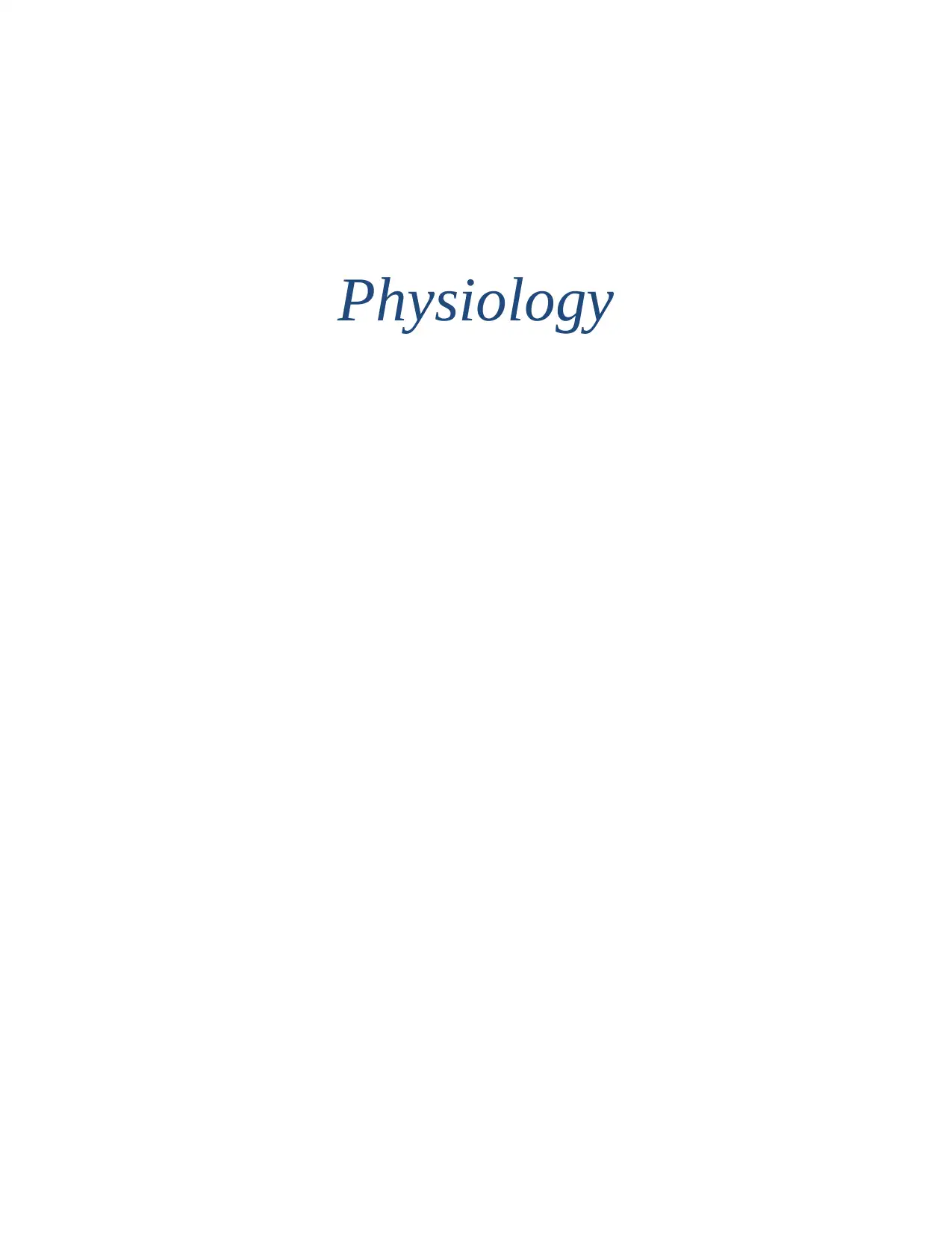
Physiology
Secure Best Marks with AI Grader
Need help grading? Try our AI Grader for instant feedback on your assignments.
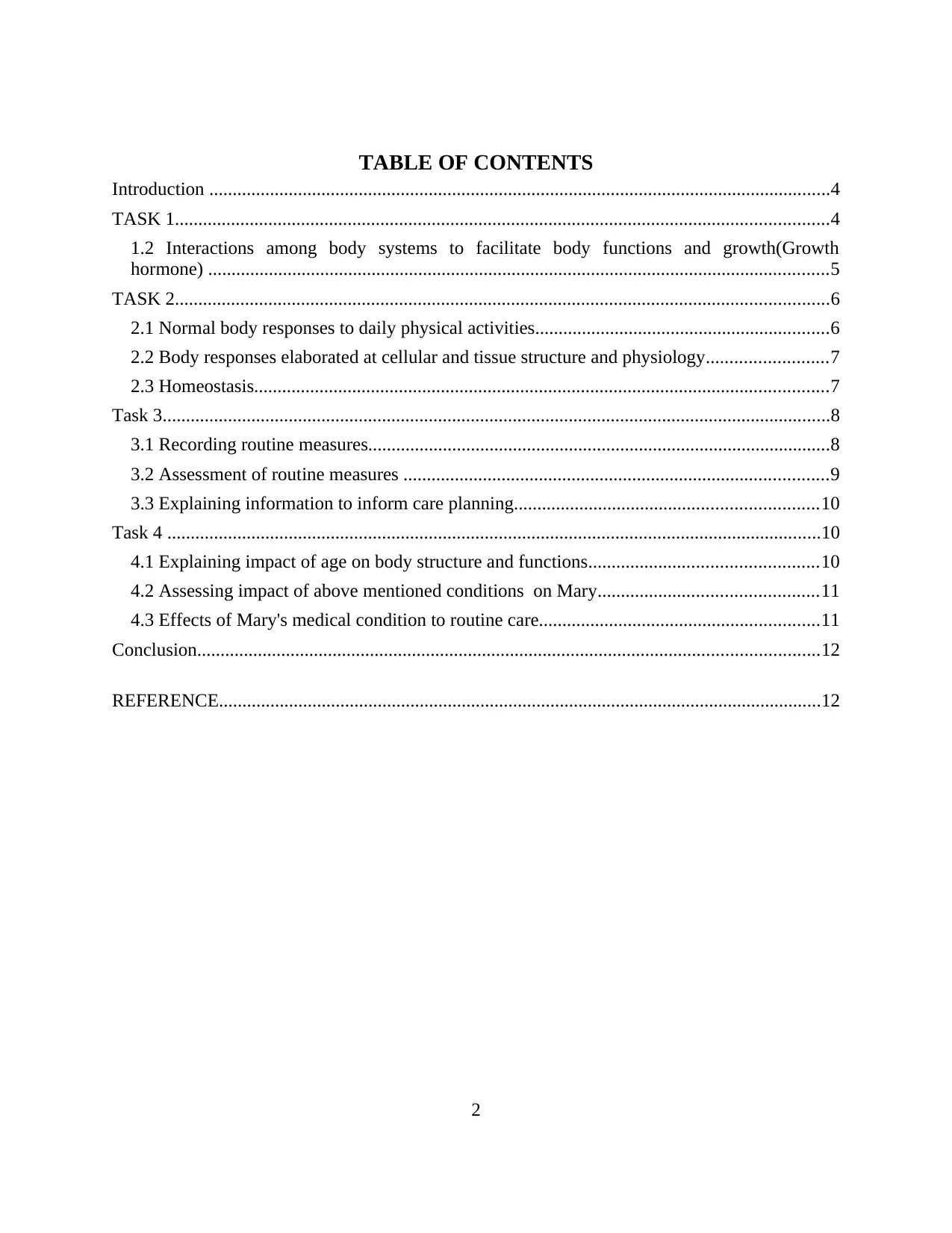
TABLE OF CONTENTS
Introduction .....................................................................................................................................4
TASK 1............................................................................................................................................4
1.2 Interactions among body systems to facilitate body functions and growth(Growth
hormone) .....................................................................................................................................5
TASK 2............................................................................................................................................6
2.1 Normal body responses to daily physical activities...............................................................6
2.2 Body responses elaborated at cellular and tissue structure and physiology..........................7
2.3 Homeostasis...........................................................................................................................7
Task 3...............................................................................................................................................8
3.1 Recording routine measures...................................................................................................8
3.2 Assessment of routine measures ...........................................................................................9
3.3 Explaining information to inform care planning.................................................................10
Task 4 ............................................................................................................................................10
4.1 Explaining impact of age on body structure and functions.................................................10
4.2 Assessing impact of above mentioned conditions on Mary...............................................11
4.3 Effects of Mary's medical condition to routine care............................................................11
Conclusion.....................................................................................................................................12
REFERENCE.................................................................................................................................12
2
Introduction .....................................................................................................................................4
TASK 1............................................................................................................................................4
1.2 Interactions among body systems to facilitate body functions and growth(Growth
hormone) .....................................................................................................................................5
TASK 2............................................................................................................................................6
2.1 Normal body responses to daily physical activities...............................................................6
2.2 Body responses elaborated at cellular and tissue structure and physiology..........................7
2.3 Homeostasis...........................................................................................................................7
Task 3...............................................................................................................................................8
3.1 Recording routine measures...................................................................................................8
3.2 Assessment of routine measures ...........................................................................................9
3.3 Explaining information to inform care planning.................................................................10
Task 4 ............................................................................................................................................10
4.1 Explaining impact of age on body structure and functions.................................................10
4.2 Assessing impact of above mentioned conditions on Mary...............................................11
4.3 Effects of Mary's medical condition to routine care............................................................11
Conclusion.....................................................................................................................................12
REFERENCE.................................................................................................................................12
2
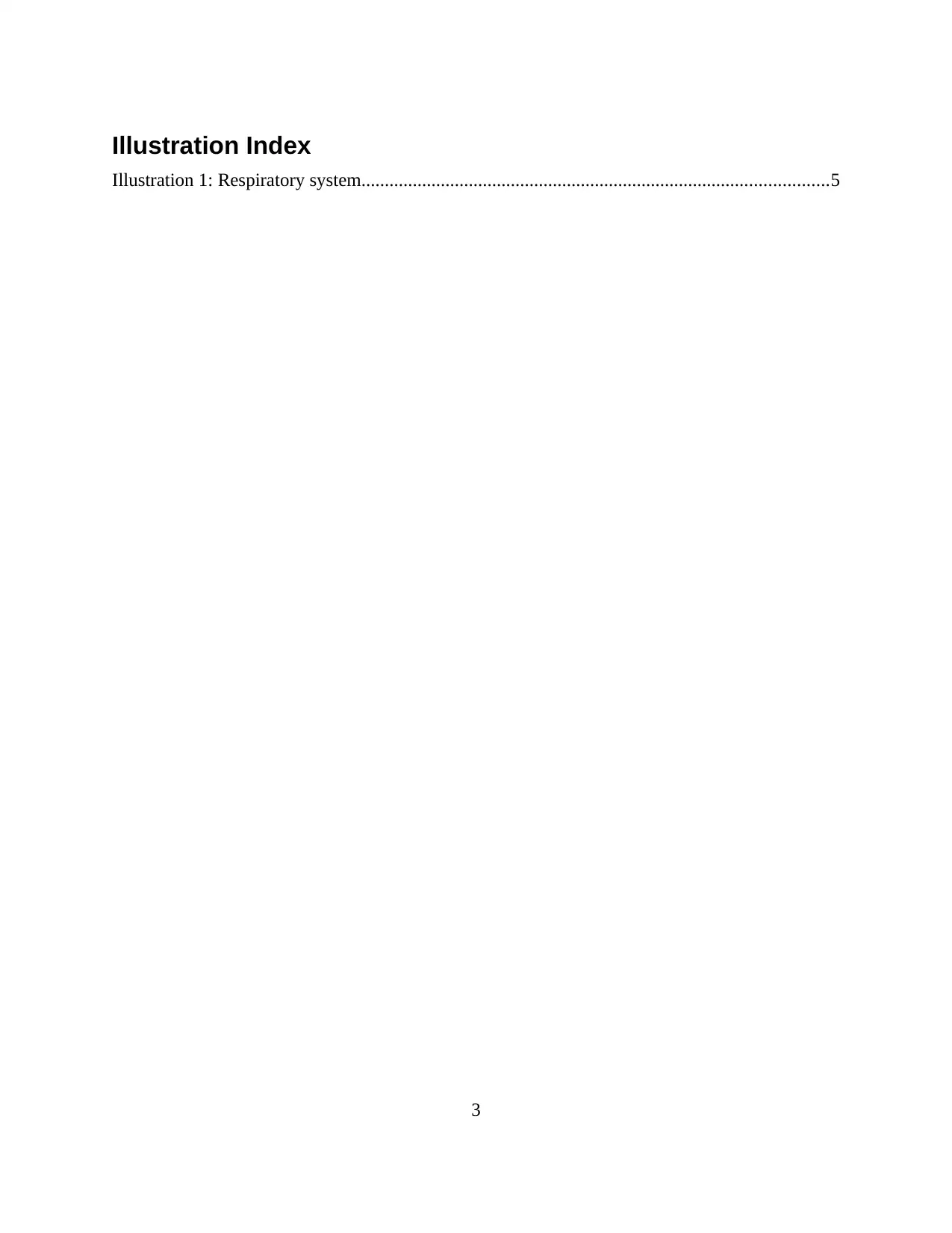
Illustration Index
Illustration 1: Respiratory system....................................................................................................5
3
Illustration 1: Respiratory system....................................................................................................5
3
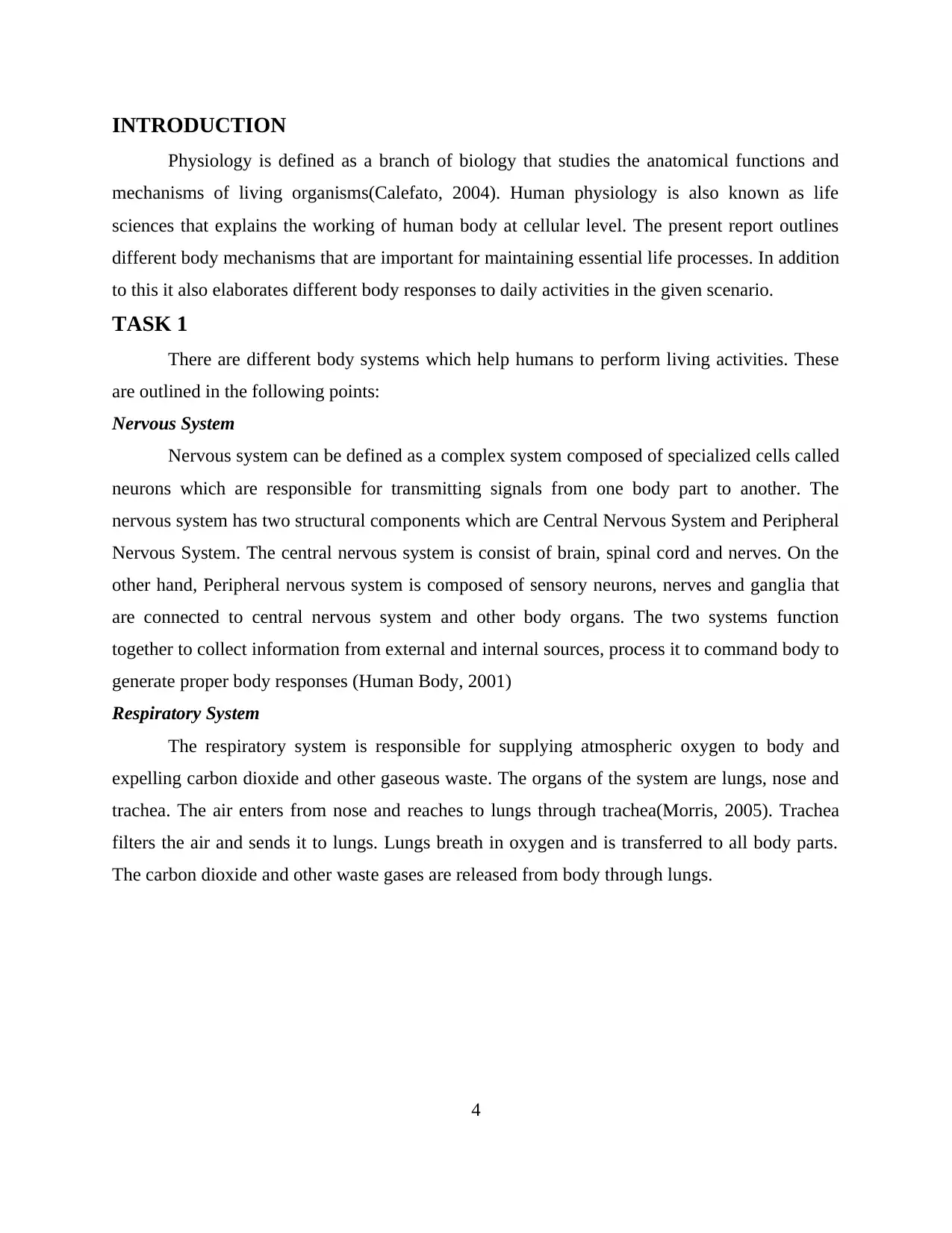
INTRODUCTION
Physiology is defined as a branch of biology that studies the anatomical functions and
mechanisms of living organisms(Calefato, 2004). Human physiology is also known as life
sciences that explains the working of human body at cellular level. The present report outlines
different body mechanisms that are important for maintaining essential life processes. In addition
to this it also elaborates different body responses to daily activities in the given scenario.
TASK 1
There are different body systems which help humans to perform living activities. These
are outlined in the following points:
Nervous System
Nervous system can be defined as a complex system composed of specialized cells called
neurons which are responsible for transmitting signals from one body part to another. The
nervous system has two structural components which are Central Nervous System and Peripheral
Nervous System. The central nervous system is consist of brain, spinal cord and nerves. On the
other hand, Peripheral nervous system is composed of sensory neurons, nerves and ganglia that
are connected to central nervous system and other body organs. The two systems function
together to collect information from external and internal sources, process it to command body to
generate proper body responses (Human Body, 2001)
Respiratory System
The respiratory system is responsible for supplying atmospheric oxygen to body and
expelling carbon dioxide and other gaseous waste. The organs of the system are lungs, nose and
trachea. The air enters from nose and reaches to lungs through trachea(Morris, 2005). Trachea
filters the air and sends it to lungs. Lungs breath in oxygen and is transferred to all body parts.
The carbon dioxide and other waste gases are released from body through lungs.
4
Physiology is defined as a branch of biology that studies the anatomical functions and
mechanisms of living organisms(Calefato, 2004). Human physiology is also known as life
sciences that explains the working of human body at cellular level. The present report outlines
different body mechanisms that are important for maintaining essential life processes. In addition
to this it also elaborates different body responses to daily activities in the given scenario.
TASK 1
There are different body systems which help humans to perform living activities. These
are outlined in the following points:
Nervous System
Nervous system can be defined as a complex system composed of specialized cells called
neurons which are responsible for transmitting signals from one body part to another. The
nervous system has two structural components which are Central Nervous System and Peripheral
Nervous System. The central nervous system is consist of brain, spinal cord and nerves. On the
other hand, Peripheral nervous system is composed of sensory neurons, nerves and ganglia that
are connected to central nervous system and other body organs. The two systems function
together to collect information from external and internal sources, process it to command body to
generate proper body responses (Human Body, 2001)
Respiratory System
The respiratory system is responsible for supplying atmospheric oxygen to body and
expelling carbon dioxide and other gaseous waste. The organs of the system are lungs, nose and
trachea. The air enters from nose and reaches to lungs through trachea(Morris, 2005). Trachea
filters the air and sends it to lungs. Lungs breath in oxygen and is transferred to all body parts.
The carbon dioxide and other waste gases are released from body through lungs.
4
Secure Best Marks with AI Grader
Need help grading? Try our AI Grader for instant feedback on your assignments.
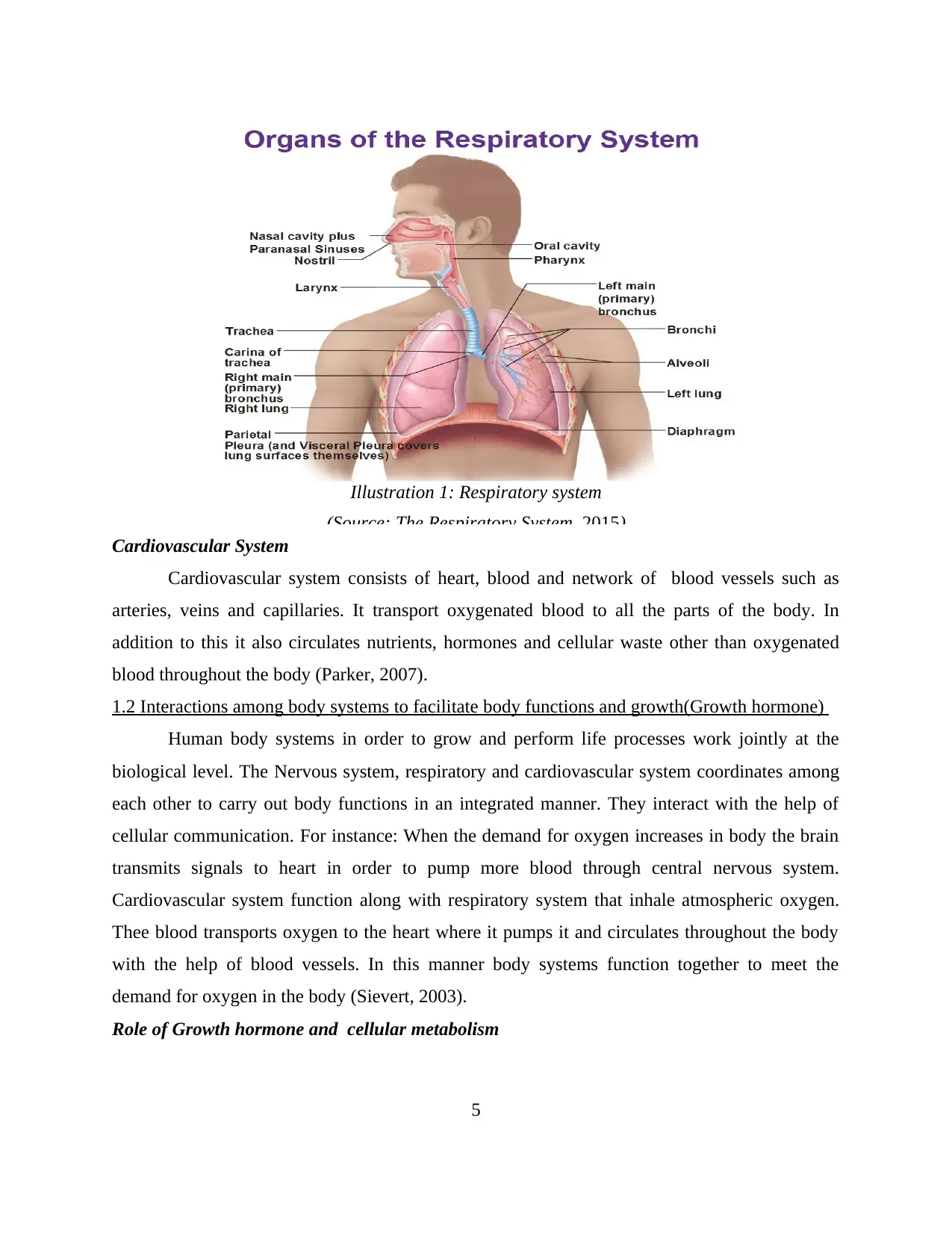
Cardiovascular System
Cardiovascular system consists of heart, blood and network of blood vessels such as
arteries, veins and capillaries. It transport oxygenated blood to all the parts of the body. In
addition to this it also circulates nutrients, hormones and cellular waste other than oxygenated
blood throughout the body (Parker, 2007).
1.2 Interactions among body systems to facilitate body functions and growth(Growth hormone)
Human body systems in order to grow and perform life processes work jointly at the
biological level. The Nervous system, respiratory and cardiovascular system coordinates among
each other to carry out body functions in an integrated manner. They interact with the help of
cellular communication. For instance: When the demand for oxygen increases in body the brain
transmits signals to heart in order to pump more blood through central nervous system.
Cardiovascular system function along with respiratory system that inhale atmospheric oxygen.
Thee blood transports oxygen to the heart where it pumps it and circulates throughout the body
with the help of blood vessels. In this manner body systems function together to meet the
demand for oxygen in the body (Sievert, 2003).
Role of Growth hormone and cellular metabolism
5
Illustration 1: Respiratory system
(Source: The Respiratory System, 2015)
Cardiovascular system consists of heart, blood and network of blood vessels such as
arteries, veins and capillaries. It transport oxygenated blood to all the parts of the body. In
addition to this it also circulates nutrients, hormones and cellular waste other than oxygenated
blood throughout the body (Parker, 2007).
1.2 Interactions among body systems to facilitate body functions and growth(Growth hormone)
Human body systems in order to grow and perform life processes work jointly at the
biological level. The Nervous system, respiratory and cardiovascular system coordinates among
each other to carry out body functions in an integrated manner. They interact with the help of
cellular communication. For instance: When the demand for oxygen increases in body the brain
transmits signals to heart in order to pump more blood through central nervous system.
Cardiovascular system function along with respiratory system that inhale atmospheric oxygen.
Thee blood transports oxygen to the heart where it pumps it and circulates throughout the body
with the help of blood vessels. In this manner body systems function together to meet the
demand for oxygen in the body (Sievert, 2003).
Role of Growth hormone and cellular metabolism
5
Illustration 1: Respiratory system
(Source: The Respiratory System, 2015)
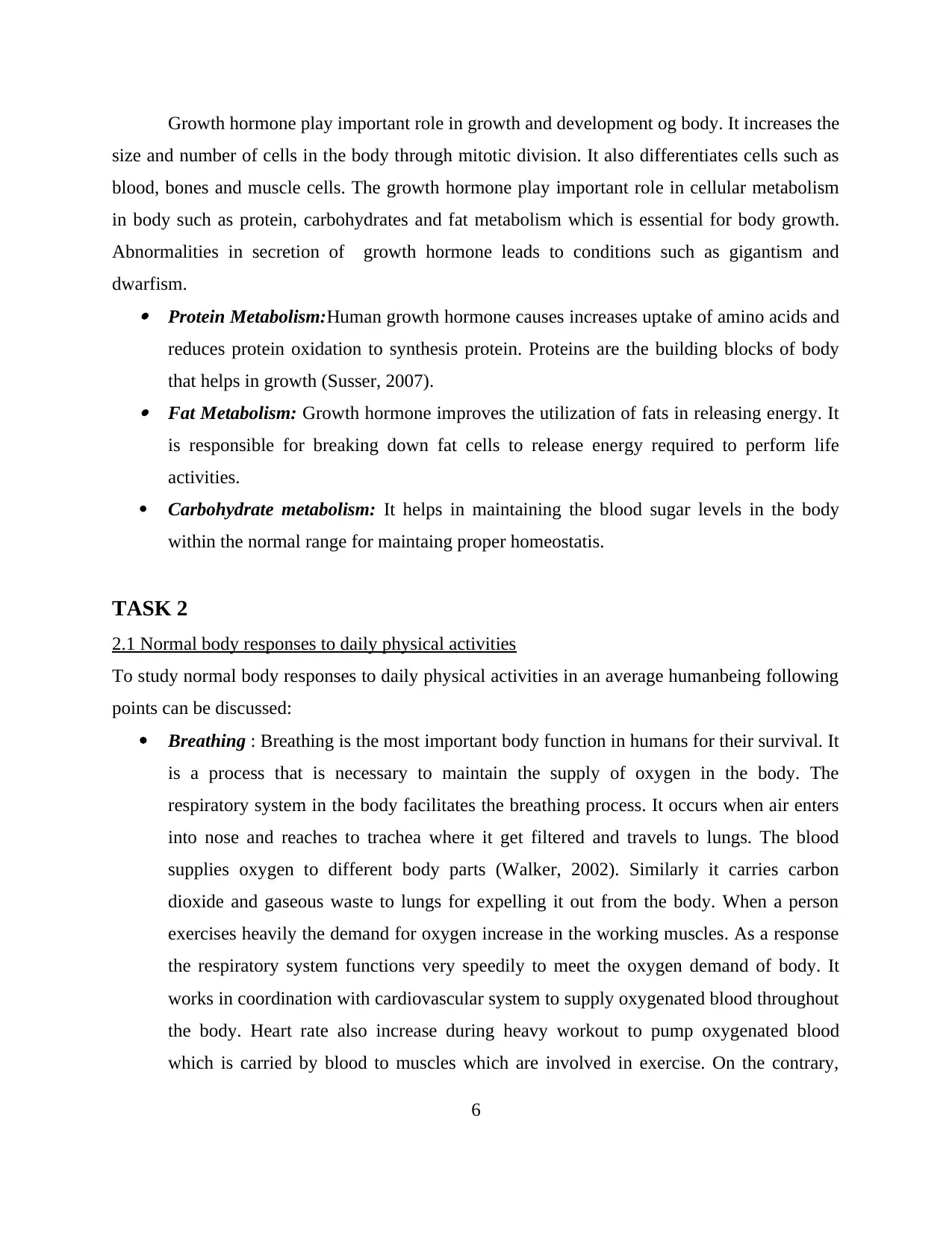
Growth hormone play important role in growth and development og body. It increases the
size and number of cells in the body through mitotic division. It also differentiates cells such as
blood, bones and muscle cells. The growth hormone play important role in cellular metabolism
in body such as protein, carbohydrates and fat metabolism which is essential for body growth.
Abnormalities in secretion of growth hormone leads to conditions such as gigantism and
dwarfism. Protein Metabolism:Human growth hormone causes increases uptake of amino acids and
reduces protein oxidation to synthesis protein. Proteins are the building blocks of body
that helps in growth (Susser, 2007). Fat Metabolism: Growth hormone improves the utilization of fats in releasing energy. It
is responsible for breaking down fat cells to release energy required to perform life
activities.
Carbohydrate metabolism: It helps in maintaining the blood sugar levels in the body
within the normal range for maintaing proper homeostatis.
TASK 2
2.1 Normal body responses to daily physical activities
To study normal body responses to daily physical activities in an average humanbeing following
points can be discussed:
Breathing : Breathing is the most important body function in humans for their survival. It
is a process that is necessary to maintain the supply of oxygen in the body. The
respiratory system in the body facilitates the breathing process. It occurs when air enters
into nose and reaches to trachea where it get filtered and travels to lungs. The blood
supplies oxygen to different body parts (Walker, 2002). Similarly it carries carbon
dioxide and gaseous waste to lungs for expelling it out from the body. When a person
exercises heavily the demand for oxygen increase in the working muscles. As a response
the respiratory system functions very speedily to meet the oxygen demand of body. It
works in coordination with cardiovascular system to supply oxygenated blood throughout
the body. Heart rate also increase during heavy workout to pump oxygenated blood
which is carried by blood to muscles which are involved in exercise. On the contrary,
6
size and number of cells in the body through mitotic division. It also differentiates cells such as
blood, bones and muscle cells. The growth hormone play important role in cellular metabolism
in body such as protein, carbohydrates and fat metabolism which is essential for body growth.
Abnormalities in secretion of growth hormone leads to conditions such as gigantism and
dwarfism. Protein Metabolism:Human growth hormone causes increases uptake of amino acids and
reduces protein oxidation to synthesis protein. Proteins are the building blocks of body
that helps in growth (Susser, 2007). Fat Metabolism: Growth hormone improves the utilization of fats in releasing energy. It
is responsible for breaking down fat cells to release energy required to perform life
activities.
Carbohydrate metabolism: It helps in maintaining the blood sugar levels in the body
within the normal range for maintaing proper homeostatis.
TASK 2
2.1 Normal body responses to daily physical activities
To study normal body responses to daily physical activities in an average humanbeing following
points can be discussed:
Breathing : Breathing is the most important body function in humans for their survival. It
is a process that is necessary to maintain the supply of oxygen in the body. The
respiratory system in the body facilitates the breathing process. It occurs when air enters
into nose and reaches to trachea where it get filtered and travels to lungs. The blood
supplies oxygen to different body parts (Walker, 2002). Similarly it carries carbon
dioxide and gaseous waste to lungs for expelling it out from the body. When a person
exercises heavily the demand for oxygen increase in the working muscles. As a response
the respiratory system functions very speedily to meet the oxygen demand of body. It
works in coordination with cardiovascular system to supply oxygenated blood throughout
the body. Heart rate also increase during heavy workout to pump oxygenated blood
which is carried by blood to muscles which are involved in exercise. On the contrary,
6
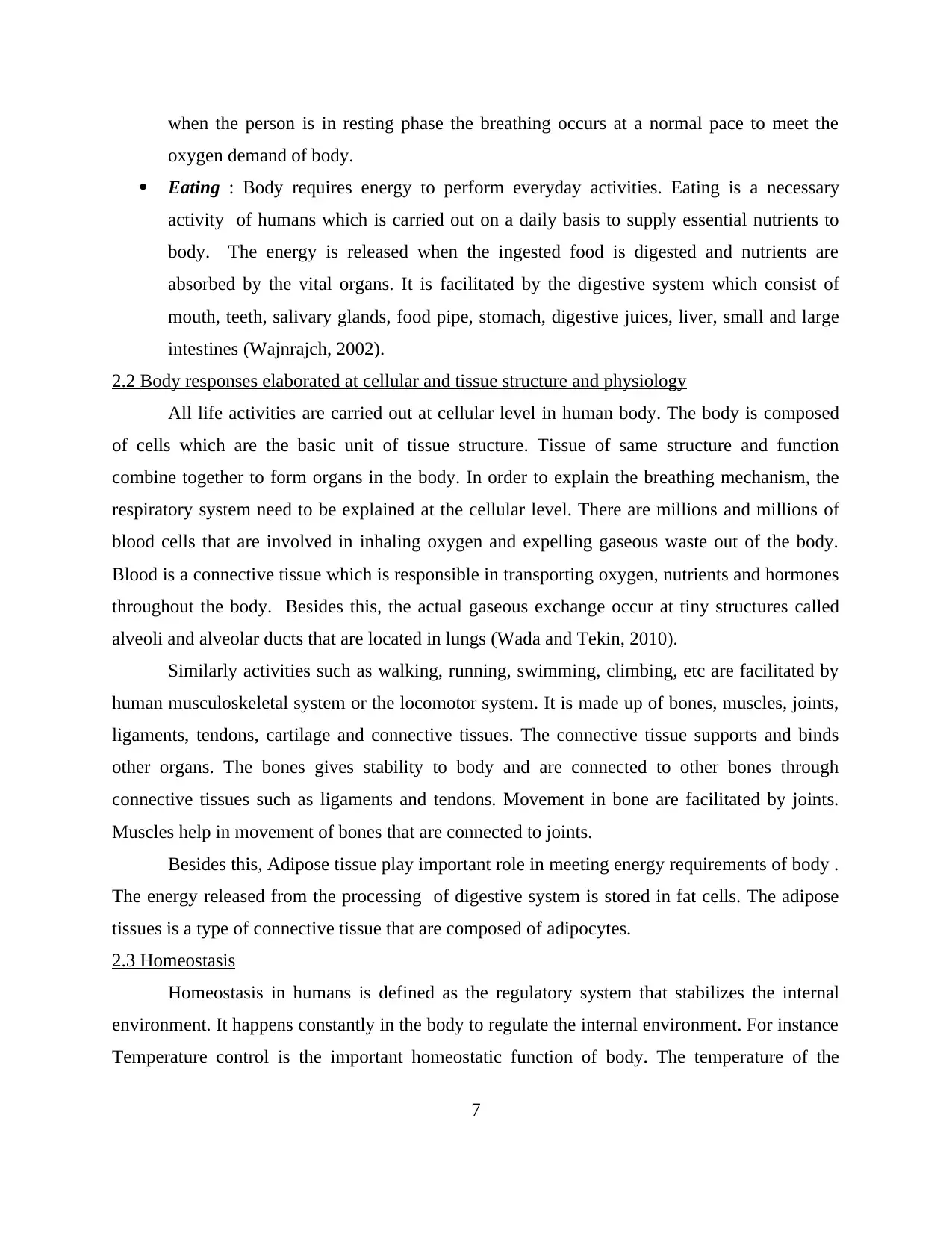
when the person is in resting phase the breathing occurs at a normal pace to meet the
oxygen demand of body.
Eating : Body requires energy to perform everyday activities. Eating is a necessary
activity of humans which is carried out on a daily basis to supply essential nutrients to
body. The energy is released when the ingested food is digested and nutrients are
absorbed by the vital organs. It is facilitated by the digestive system which consist of
mouth, teeth, salivary glands, food pipe, stomach, digestive juices, liver, small and large
intestines (Wajnrajch, 2002).
2.2 Body responses elaborated at cellular and tissue structure and physiology
All life activities are carried out at cellular level in human body. The body is composed
of cells which are the basic unit of tissue structure. Tissue of same structure and function
combine together to form organs in the body. In order to explain the breathing mechanism, the
respiratory system need to be explained at the cellular level. There are millions and millions of
blood cells that are involved in inhaling oxygen and expelling gaseous waste out of the body.
Blood is a connective tissue which is responsible in transporting oxygen, nutrients and hormones
throughout the body. Besides this, the actual gaseous exchange occur at tiny structures called
alveoli and alveolar ducts that are located in lungs (Wada and Tekin, 2010).
Similarly activities such as walking, running, swimming, climbing, etc are facilitated by
human musculoskeletal system or the locomotor system. It is made up of bones, muscles, joints,
ligaments, tendons, cartilage and connective tissues. The connective tissue supports and binds
other organs. The bones gives stability to body and are connected to other bones through
connective tissues such as ligaments and tendons. Movement in bone are facilitated by joints.
Muscles help in movement of bones that are connected to joints.
Besides this, Adipose tissue play important role in meeting energy requirements of body .
The energy released from the processing of digestive system is stored in fat cells. The adipose
tissues is a type of connective tissue that are composed of adipocytes.
2.3 Homeostasis
Homeostasis in humans is defined as the regulatory system that stabilizes the internal
environment. It happens constantly in the body to regulate the internal environment. For instance
Temperature control is the important homeostatic function of body. The temperature of the
7
oxygen demand of body.
Eating : Body requires energy to perform everyday activities. Eating is a necessary
activity of humans which is carried out on a daily basis to supply essential nutrients to
body. The energy is released when the ingested food is digested and nutrients are
absorbed by the vital organs. It is facilitated by the digestive system which consist of
mouth, teeth, salivary glands, food pipe, stomach, digestive juices, liver, small and large
intestines (Wajnrajch, 2002).
2.2 Body responses elaborated at cellular and tissue structure and physiology
All life activities are carried out at cellular level in human body. The body is composed
of cells which are the basic unit of tissue structure. Tissue of same structure and function
combine together to form organs in the body. In order to explain the breathing mechanism, the
respiratory system need to be explained at the cellular level. There are millions and millions of
blood cells that are involved in inhaling oxygen and expelling gaseous waste out of the body.
Blood is a connective tissue which is responsible in transporting oxygen, nutrients and hormones
throughout the body. Besides this, the actual gaseous exchange occur at tiny structures called
alveoli and alveolar ducts that are located in lungs (Wada and Tekin, 2010).
Similarly activities such as walking, running, swimming, climbing, etc are facilitated by
human musculoskeletal system or the locomotor system. It is made up of bones, muscles, joints,
ligaments, tendons, cartilage and connective tissues. The connective tissue supports and binds
other organs. The bones gives stability to body and are connected to other bones through
connective tissues such as ligaments and tendons. Movement in bone are facilitated by joints.
Muscles help in movement of bones that are connected to joints.
Besides this, Adipose tissue play important role in meeting energy requirements of body .
The energy released from the processing of digestive system is stored in fat cells. The adipose
tissues is a type of connective tissue that are composed of adipocytes.
2.3 Homeostasis
Homeostasis in humans is defined as the regulatory system that stabilizes the internal
environment. It happens constantly in the body to regulate the internal environment. For instance
Temperature control is the important homeostatic function of body. The temperature of the
7
Paraphrase This Document
Need a fresh take? Get an instant paraphrase of this document with our AI Paraphraser
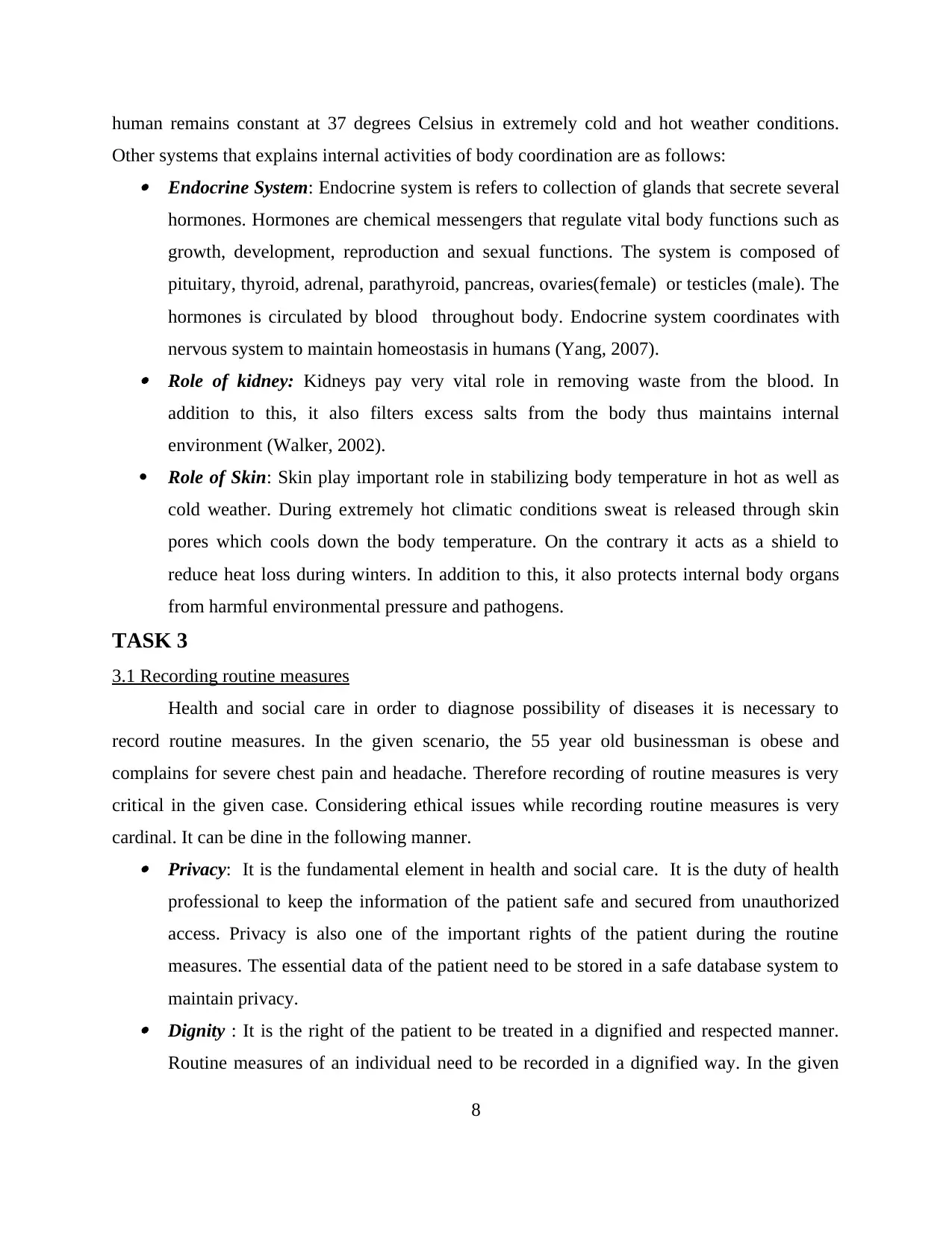
human remains constant at 37 degrees Celsius in extremely cold and hot weather conditions.
Other systems that explains internal activities of body coordination are as follows: Endocrine System: Endocrine system is refers to collection of glands that secrete several
hormones. Hormones are chemical messengers that regulate vital body functions such as
growth, development, reproduction and sexual functions. The system is composed of
pituitary, thyroid, adrenal, parathyroid, pancreas, ovaries(female) or testicles (male). The
hormones is circulated by blood throughout body. Endocrine system coordinates with
nervous system to maintain homeostasis in humans (Yang, 2007). Role of kidney: Kidneys pay very vital role in removing waste from the blood. In
addition to this, it also filters excess salts from the body thus maintains internal
environment (Walker, 2002).
Role of Skin: Skin play important role in stabilizing body temperature in hot as well as
cold weather. During extremely hot climatic conditions sweat is released through skin
pores which cools down the body temperature. On the contrary it acts as a shield to
reduce heat loss during winters. In addition to this, it also protects internal body organs
from harmful environmental pressure and pathogens.
TASK 3
3.1 Recording routine measures
Health and social care in order to diagnose possibility of diseases it is necessary to
record routine measures. In the given scenario, the 55 year old businessman is obese and
complains for severe chest pain and headache. Therefore recording of routine measures is very
critical in the given case. Considering ethical issues while recording routine measures is very
cardinal. It can be dine in the following manner. Privacy: It is the fundamental element in health and social care. It is the duty of health
professional to keep the information of the patient safe and secured from unauthorized
access. Privacy is also one of the important rights of the patient during the routine
measures. The essential data of the patient need to be stored in a safe database system to
maintain privacy. Dignity : It is the right of the patient to be treated in a dignified and respected manner.
Routine measures of an individual need to be recorded in a dignified way. In the given
8
Other systems that explains internal activities of body coordination are as follows: Endocrine System: Endocrine system is refers to collection of glands that secrete several
hormones. Hormones are chemical messengers that regulate vital body functions such as
growth, development, reproduction and sexual functions. The system is composed of
pituitary, thyroid, adrenal, parathyroid, pancreas, ovaries(female) or testicles (male). The
hormones is circulated by blood throughout body. Endocrine system coordinates with
nervous system to maintain homeostasis in humans (Yang, 2007). Role of kidney: Kidneys pay very vital role in removing waste from the blood. In
addition to this, it also filters excess salts from the body thus maintains internal
environment (Walker, 2002).
Role of Skin: Skin play important role in stabilizing body temperature in hot as well as
cold weather. During extremely hot climatic conditions sweat is released through skin
pores which cools down the body temperature. On the contrary it acts as a shield to
reduce heat loss during winters. In addition to this, it also protects internal body organs
from harmful environmental pressure and pathogens.
TASK 3
3.1 Recording routine measures
Health and social care in order to diagnose possibility of diseases it is necessary to
record routine measures. In the given scenario, the 55 year old businessman is obese and
complains for severe chest pain and headache. Therefore recording of routine measures is very
critical in the given case. Considering ethical issues while recording routine measures is very
cardinal. It can be dine in the following manner. Privacy: It is the fundamental element in health and social care. It is the duty of health
professional to keep the information of the patient safe and secured from unauthorized
access. Privacy is also one of the important rights of the patient during the routine
measures. The essential data of the patient need to be stored in a safe database system to
maintain privacy. Dignity : It is the right of the patient to be treated in a dignified and respected manner.
Routine measures of an individual need to be recorded in a dignified way. In the given
8
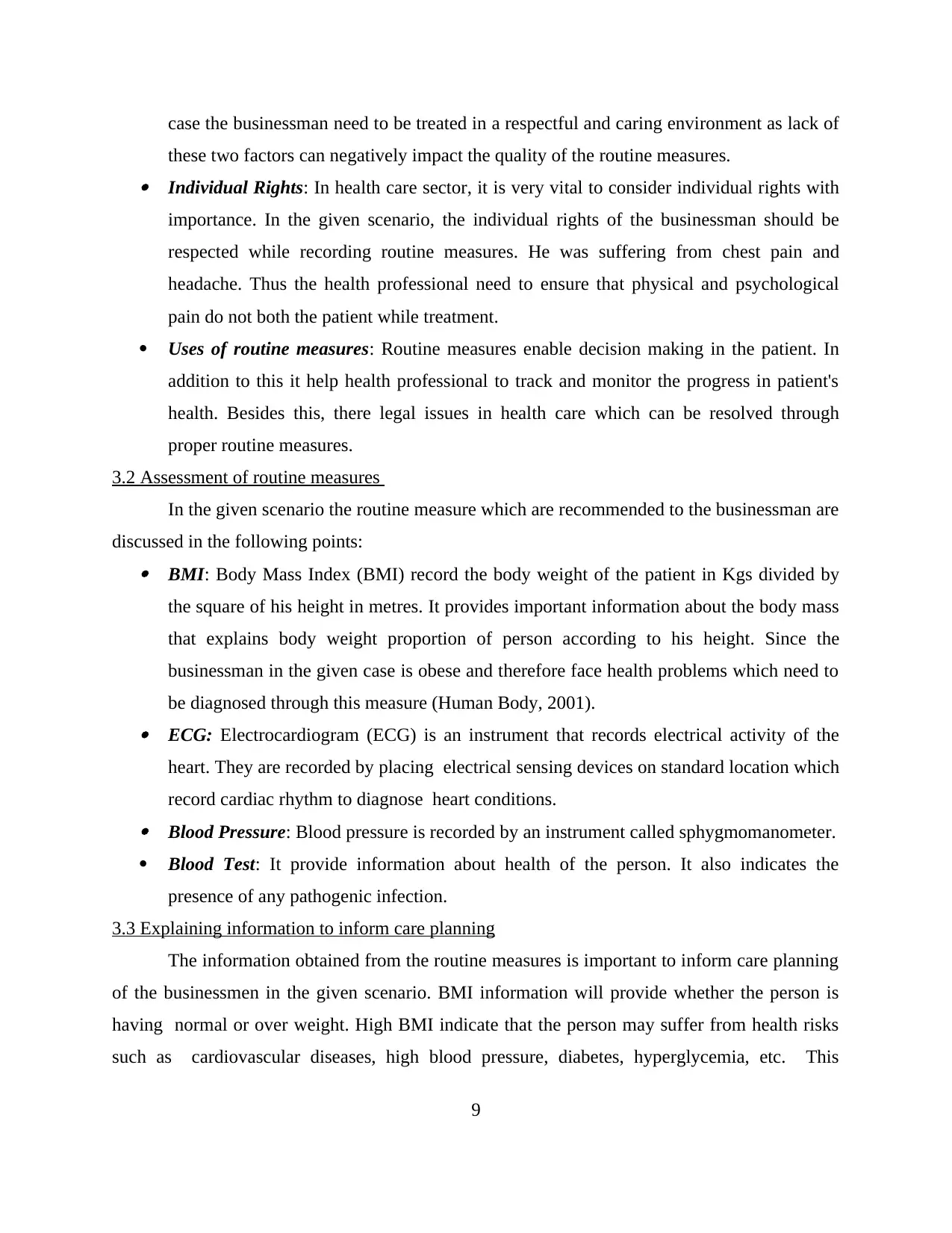
case the businessman need to be treated in a respectful and caring environment as lack of
these two factors can negatively impact the quality of the routine measures. Individual Rights: In health care sector, it is very vital to consider individual rights with
importance. In the given scenario, the individual rights of the businessman should be
respected while recording routine measures. He was suffering from chest pain and
headache. Thus the health professional need to ensure that physical and psychological
pain do not both the patient while treatment.
Uses of routine measures: Routine measures enable decision making in the patient. In
addition to this it help health professional to track and monitor the progress in patient's
health. Besides this, there legal issues in health care which can be resolved through
proper routine measures.
3.2 Assessment of routine measures
In the given scenario the routine measure which are recommended to the businessman are
discussed in the following points: BMI: Body Mass Index (BMI) record the body weight of the patient in Kgs divided by
the square of his height in metres. It provides important information about the body mass
that explains body weight proportion of person according to his height. Since the
businessman in the given case is obese and therefore face health problems which need to
be diagnosed through this measure (Human Body, 2001). ECG: Electrocardiogram (ECG) is an instrument that records electrical activity of the
heart. They are recorded by placing electrical sensing devices on standard location which
record cardiac rhythm to diagnose heart conditions. Blood Pressure: Blood pressure is recorded by an instrument called sphygmomanometer.
Blood Test: It provide information about health of the person. It also indicates the
presence of any pathogenic infection.
3.3 Explaining information to inform care planning
The information obtained from the routine measures is important to inform care planning
of the businessmen in the given scenario. BMI information will provide whether the person is
having normal or over weight. High BMI indicate that the person may suffer from health risks
such as cardiovascular diseases, high blood pressure, diabetes, hyperglycemia, etc. This
9
these two factors can negatively impact the quality of the routine measures. Individual Rights: In health care sector, it is very vital to consider individual rights with
importance. In the given scenario, the individual rights of the businessman should be
respected while recording routine measures. He was suffering from chest pain and
headache. Thus the health professional need to ensure that physical and psychological
pain do not both the patient while treatment.
Uses of routine measures: Routine measures enable decision making in the patient. In
addition to this it help health professional to track and monitor the progress in patient's
health. Besides this, there legal issues in health care which can be resolved through
proper routine measures.
3.2 Assessment of routine measures
In the given scenario the routine measure which are recommended to the businessman are
discussed in the following points: BMI: Body Mass Index (BMI) record the body weight of the patient in Kgs divided by
the square of his height in metres. It provides important information about the body mass
that explains body weight proportion of person according to his height. Since the
businessman in the given case is obese and therefore face health problems which need to
be diagnosed through this measure (Human Body, 2001). ECG: Electrocardiogram (ECG) is an instrument that records electrical activity of the
heart. They are recorded by placing electrical sensing devices on standard location which
record cardiac rhythm to diagnose heart conditions. Blood Pressure: Blood pressure is recorded by an instrument called sphygmomanometer.
Blood Test: It provide information about health of the person. It also indicates the
presence of any pathogenic infection.
3.3 Explaining information to inform care planning
The information obtained from the routine measures is important to inform care planning
of the businessmen in the given scenario. BMI information will provide whether the person is
having normal or over weight. High BMI indicate that the person may suffer from health risks
such as cardiovascular diseases, high blood pressure, diabetes, hyperglycemia, etc. This
9
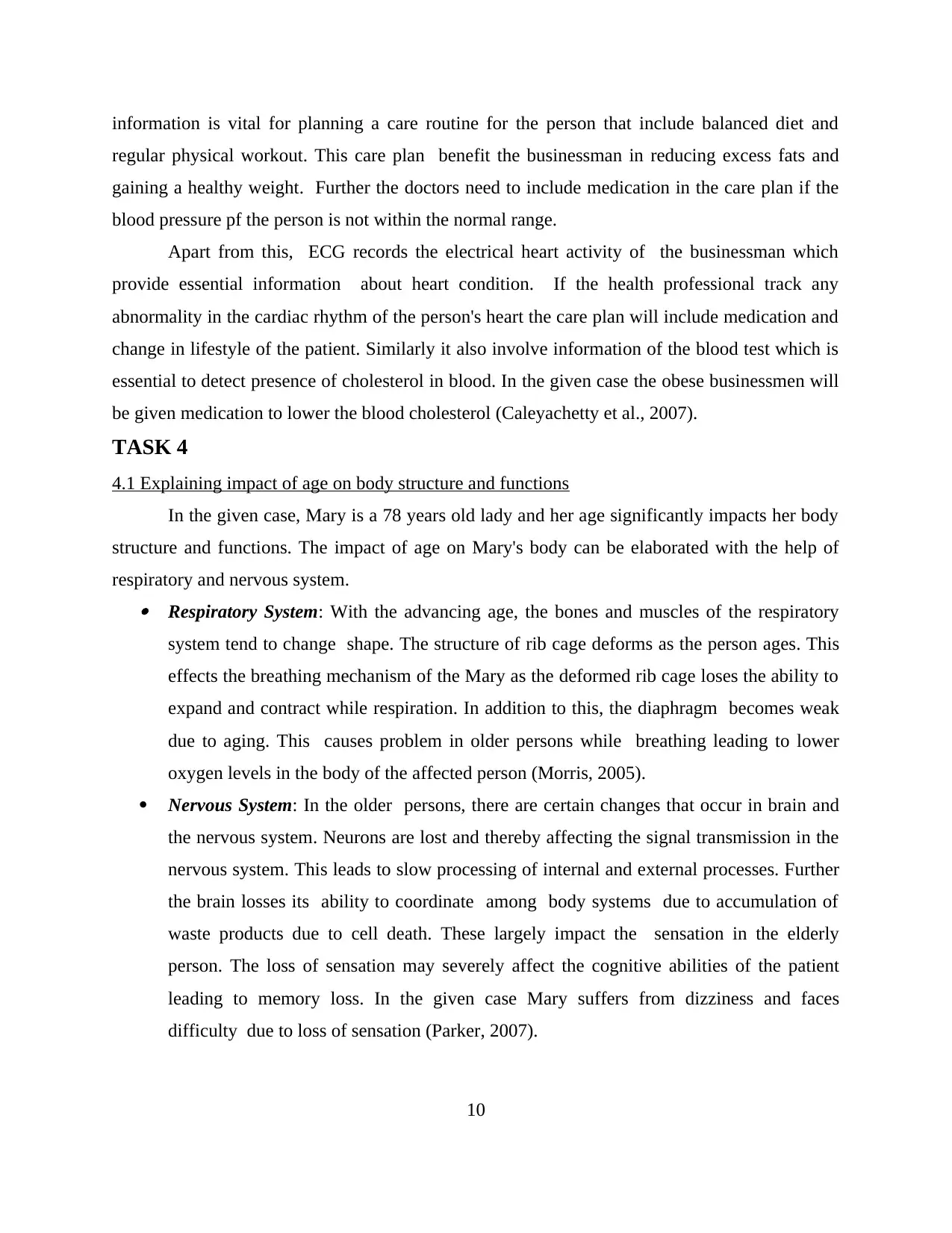
information is vital for planning a care routine for the person that include balanced diet and
regular physical workout. This care plan benefit the businessman in reducing excess fats and
gaining a healthy weight. Further the doctors need to include medication in the care plan if the
blood pressure pf the person is not within the normal range.
Apart from this, ECG records the electrical heart activity of the businessman which
provide essential information about heart condition. If the health professional track any
abnormality in the cardiac rhythm of the person's heart the care plan will include medication and
change in lifestyle of the patient. Similarly it also involve information of the blood test which is
essential to detect presence of cholesterol in blood. In the given case the obese businessmen will
be given medication to lower the blood cholesterol (Caleyachetty et al., 2007).
TASK 4
4.1 Explaining impact of age on body structure and functions
In the given case, Mary is a 78 years old lady and her age significantly impacts her body
structure and functions. The impact of age on Mary's body can be elaborated with the help of
respiratory and nervous system. Respiratory System: With the advancing age, the bones and muscles of the respiratory
system tend to change shape. The structure of rib cage deforms as the person ages. This
effects the breathing mechanism of the Mary as the deformed rib cage loses the ability to
expand and contract while respiration. In addition to this, the diaphragm becomes weak
due to aging. This causes problem in older persons while breathing leading to lower
oxygen levels in the body of the affected person (Morris, 2005).
Nervous System: In the older persons, there are certain changes that occur in brain and
the nervous system. Neurons are lost and thereby affecting the signal transmission in the
nervous system. This leads to slow processing of internal and external processes. Further
the brain losses its ability to coordinate among body systems due to accumulation of
waste products due to cell death. These largely impact the sensation in the elderly
person. The loss of sensation may severely affect the cognitive abilities of the patient
leading to memory loss. In the given case Mary suffers from dizziness and faces
difficulty due to loss of sensation (Parker, 2007).
10
regular physical workout. This care plan benefit the businessman in reducing excess fats and
gaining a healthy weight. Further the doctors need to include medication in the care plan if the
blood pressure pf the person is not within the normal range.
Apart from this, ECG records the electrical heart activity of the businessman which
provide essential information about heart condition. If the health professional track any
abnormality in the cardiac rhythm of the person's heart the care plan will include medication and
change in lifestyle of the patient. Similarly it also involve information of the blood test which is
essential to detect presence of cholesterol in blood. In the given case the obese businessmen will
be given medication to lower the blood cholesterol (Caleyachetty et al., 2007).
TASK 4
4.1 Explaining impact of age on body structure and functions
In the given case, Mary is a 78 years old lady and her age significantly impacts her body
structure and functions. The impact of age on Mary's body can be elaborated with the help of
respiratory and nervous system. Respiratory System: With the advancing age, the bones and muscles of the respiratory
system tend to change shape. The structure of rib cage deforms as the person ages. This
effects the breathing mechanism of the Mary as the deformed rib cage loses the ability to
expand and contract while respiration. In addition to this, the diaphragm becomes weak
due to aging. This causes problem in older persons while breathing leading to lower
oxygen levels in the body of the affected person (Morris, 2005).
Nervous System: In the older persons, there are certain changes that occur in brain and
the nervous system. Neurons are lost and thereby affecting the signal transmission in the
nervous system. This leads to slow processing of internal and external processes. Further
the brain losses its ability to coordinate among body systems due to accumulation of
waste products due to cell death. These largely impact the sensation in the elderly
person. The loss of sensation may severely affect the cognitive abilities of the patient
leading to memory loss. In the given case Mary suffers from dizziness and faces
difficulty due to loss of sensation (Parker, 2007).
10
Secure Best Marks with AI Grader
Need help grading? Try our AI Grader for instant feedback on your assignments.
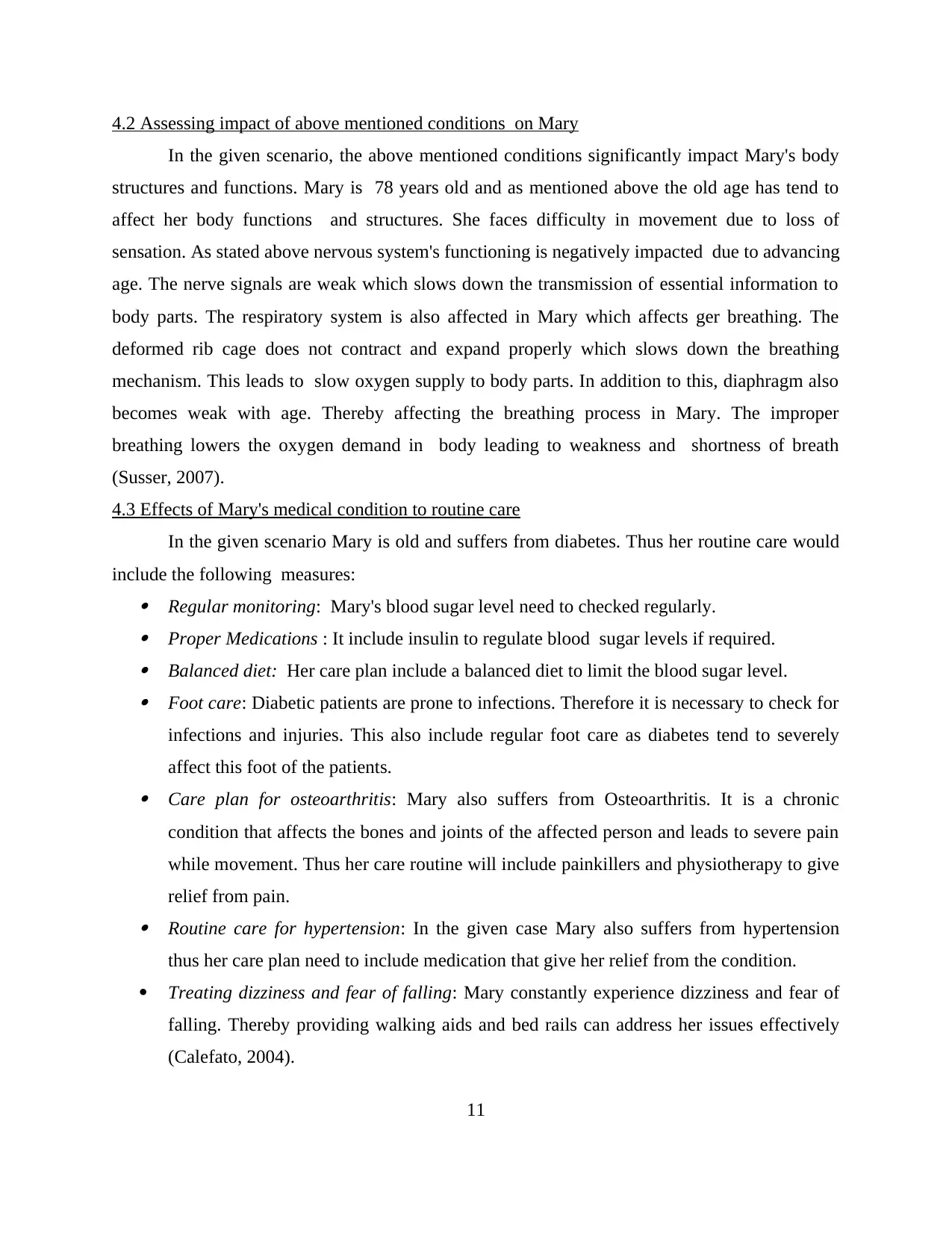
4.2 Assessing impact of above mentioned conditions on Mary
In the given scenario, the above mentioned conditions significantly impact Mary's body
structures and functions. Mary is 78 years old and as mentioned above the old age has tend to
affect her body functions and structures. She faces difficulty in movement due to loss of
sensation. As stated above nervous system's functioning is negatively impacted due to advancing
age. The nerve signals are weak which slows down the transmission of essential information to
body parts. The respiratory system is also affected in Mary which affects ger breathing. The
deformed rib cage does not contract and expand properly which slows down the breathing
mechanism. This leads to slow oxygen supply to body parts. In addition to this, diaphragm also
becomes weak with age. Thereby affecting the breathing process in Mary. The improper
breathing lowers the oxygen demand in body leading to weakness and shortness of breath
(Susser, 2007).
4.3 Effects of Mary's medical condition to routine care
In the given scenario Mary is old and suffers from diabetes. Thus her routine care would
include the following measures: Regular monitoring: Mary's blood sugar level need to checked regularly. Proper Medications : It include insulin to regulate blood sugar levels if required. Balanced diet: Her care plan include a balanced diet to limit the blood sugar level. Foot care: Diabetic patients are prone to infections. Therefore it is necessary to check for
infections and injuries. This also include regular foot care as diabetes tend to severely
affect this foot of the patients. Care plan for osteoarthritis: Mary also suffers from Osteoarthritis. It is a chronic
condition that affects the bones and joints of the affected person and leads to severe pain
while movement. Thus her care routine will include painkillers and physiotherapy to give
relief from pain. Routine care for hypertension: In the given case Mary also suffers from hypertension
thus her care plan need to include medication that give her relief from the condition.
Treating dizziness and fear of falling: Mary constantly experience dizziness and fear of
falling. Thereby providing walking aids and bed rails can address her issues effectively
(Calefato, 2004).
11
In the given scenario, the above mentioned conditions significantly impact Mary's body
structures and functions. Mary is 78 years old and as mentioned above the old age has tend to
affect her body functions and structures. She faces difficulty in movement due to loss of
sensation. As stated above nervous system's functioning is negatively impacted due to advancing
age. The nerve signals are weak which slows down the transmission of essential information to
body parts. The respiratory system is also affected in Mary which affects ger breathing. The
deformed rib cage does not contract and expand properly which slows down the breathing
mechanism. This leads to slow oxygen supply to body parts. In addition to this, diaphragm also
becomes weak with age. Thereby affecting the breathing process in Mary. The improper
breathing lowers the oxygen demand in body leading to weakness and shortness of breath
(Susser, 2007).
4.3 Effects of Mary's medical condition to routine care
In the given scenario Mary is old and suffers from diabetes. Thus her routine care would
include the following measures: Regular monitoring: Mary's blood sugar level need to checked regularly. Proper Medications : It include insulin to regulate blood sugar levels if required. Balanced diet: Her care plan include a balanced diet to limit the blood sugar level. Foot care: Diabetic patients are prone to infections. Therefore it is necessary to check for
infections and injuries. This also include regular foot care as diabetes tend to severely
affect this foot of the patients. Care plan for osteoarthritis: Mary also suffers from Osteoarthritis. It is a chronic
condition that affects the bones and joints of the affected person and leads to severe pain
while movement. Thus her care routine will include painkillers and physiotherapy to give
relief from pain. Routine care for hypertension: In the given case Mary also suffers from hypertension
thus her care plan need to include medication that give her relief from the condition.
Treating dizziness and fear of falling: Mary constantly experience dizziness and fear of
falling. Thereby providing walking aids and bed rails can address her issues effectively
(Calefato, 2004).
11
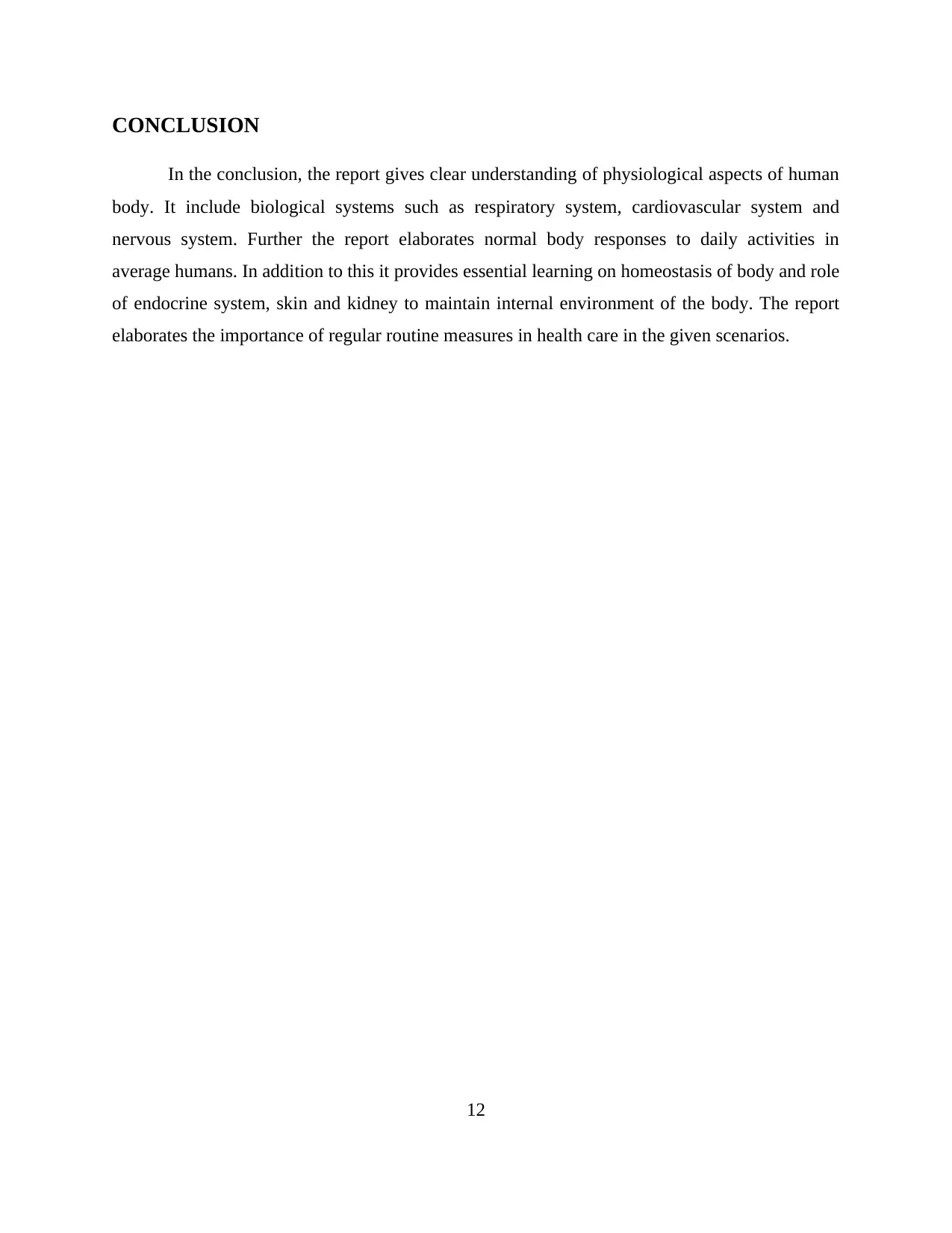
CONCLUSION
In the conclusion, the report gives clear understanding of physiological aspects of human
body. It include biological systems such as respiratory system, cardiovascular system and
nervous system. Further the report elaborates normal body responses to daily activities in
average humans. In addition to this it provides essential learning on homeostasis of body and role
of endocrine system, skin and kidney to maintain internal environment of the body. The report
elaborates the importance of regular routine measures in health care in the given scenarios.
12
In the conclusion, the report gives clear understanding of physiological aspects of human
body. It include biological systems such as respiratory system, cardiovascular system and
nervous system. Further the report elaborates normal body responses to daily activities in
average humans. In addition to this it provides essential learning on homeostasis of body and role
of endocrine system, skin and kidney to maintain internal environment of the body. The report
elaborates the importance of regular routine measures in health care in the given scenarios.
12
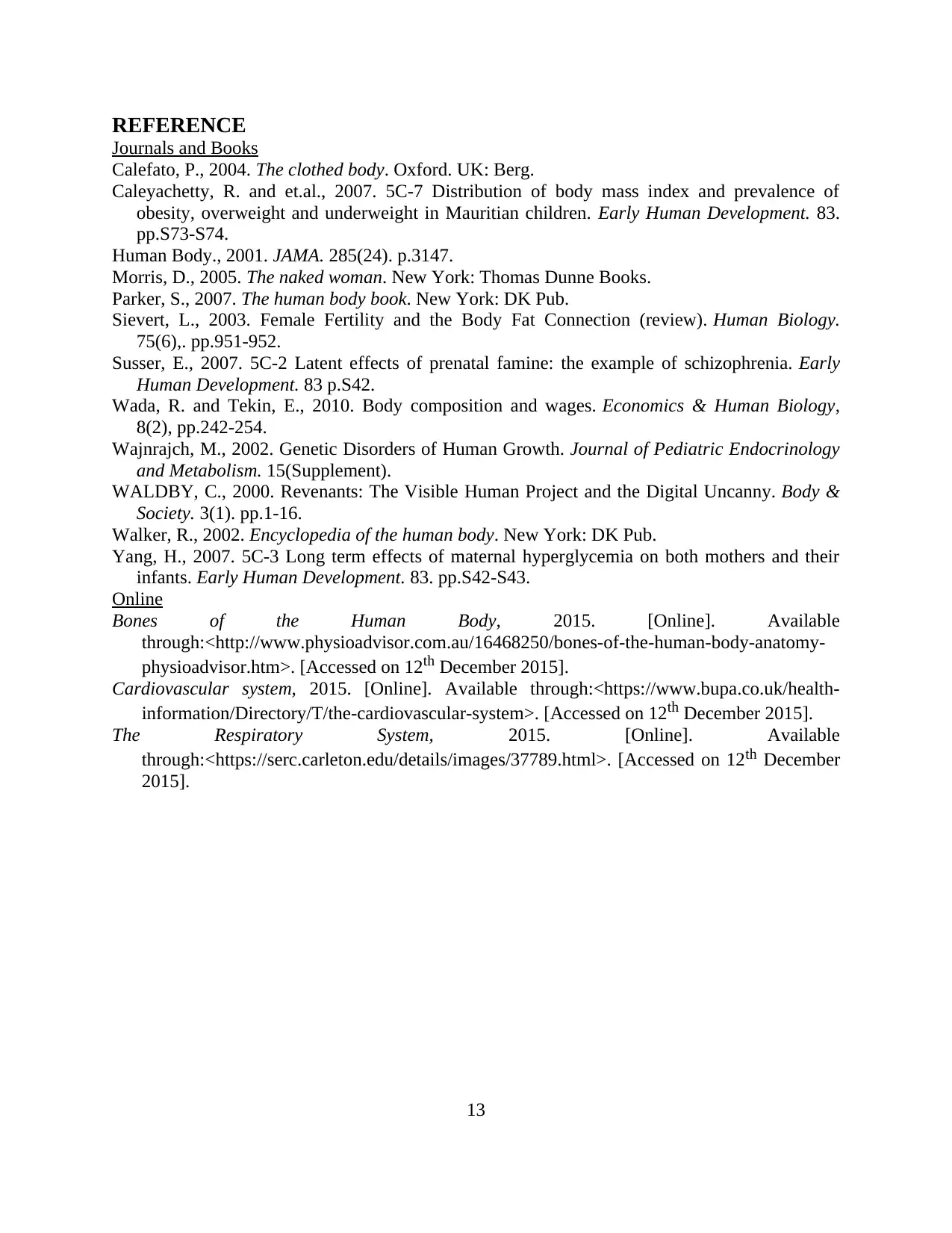
REFERENCE
Journals and Books
Calefato, P., 2004. The clothed body. Oxford. UK: Berg.
Caleyachetty, R. and et.al., 2007. 5C-7 Distribution of body mass index and prevalence of
obesity, overweight and underweight in Mauritian children. Early Human Development. 83.
pp.S73-S74.
Human Body., 2001. JAMA. 285(24). p.3147.
Morris, D., 2005. The naked woman. New York: Thomas Dunne Books.
Parker, S., 2007. The human body book. New York: DK Pub.
Sievert, L., 2003. Female Fertility and the Body Fat Connection (review). Human Biology.
75(6),. pp.951-952.
Susser, E., 2007. 5C-2 Latent effects of prenatal famine: the example of schizophrenia. Early
Human Development. 83 p.S42.
Wada, R. and Tekin, E., 2010. Body composition and wages. Economics & Human Biology,
8(2), pp.242-254.
Wajnrajch, M., 2002. Genetic Disorders of Human Growth. Journal of Pediatric Endocrinology
and Metabolism. 15(Supplement).
WALDBY, C., 2000. Revenants: The Visible Human Project and the Digital Uncanny. Body &
Society. 3(1). pp.1-16.
Walker, R., 2002. Encyclopedia of the human body. New York: DK Pub.
Yang, H., 2007. 5C-3 Long term effects of maternal hyperglycemia on both mothers and their
infants. Early Human Development. 83. pp.S42-S43.
Online
Bones of the Human Body, 2015. [Online]. Available
through:<http://www.physioadvisor.com.au/16468250/bones-of-the-human-body-anatomy-
physioadvisor.htm>. [Accessed on 12th December 2015].
Cardiovascular system, 2015. [Online]. Available through:<https://www.bupa.co.uk/health-
information/Directory/T/the-cardiovascular-system>. [Accessed on 12th December 2015].
The Respiratory System, 2015. [Online]. Available
through:<https://serc.carleton.edu/details/images/37789.html>. [Accessed on 12th December
2015].
13
Journals and Books
Calefato, P., 2004. The clothed body. Oxford. UK: Berg.
Caleyachetty, R. and et.al., 2007. 5C-7 Distribution of body mass index and prevalence of
obesity, overweight and underweight in Mauritian children. Early Human Development. 83.
pp.S73-S74.
Human Body., 2001. JAMA. 285(24). p.3147.
Morris, D., 2005. The naked woman. New York: Thomas Dunne Books.
Parker, S., 2007. The human body book. New York: DK Pub.
Sievert, L., 2003. Female Fertility and the Body Fat Connection (review). Human Biology.
75(6),. pp.951-952.
Susser, E., 2007. 5C-2 Latent effects of prenatal famine: the example of schizophrenia. Early
Human Development. 83 p.S42.
Wada, R. and Tekin, E., 2010. Body composition and wages. Economics & Human Biology,
8(2), pp.242-254.
Wajnrajch, M., 2002. Genetic Disorders of Human Growth. Journal of Pediatric Endocrinology
and Metabolism. 15(Supplement).
WALDBY, C., 2000. Revenants: The Visible Human Project and the Digital Uncanny. Body &
Society. 3(1). pp.1-16.
Walker, R., 2002. Encyclopedia of the human body. New York: DK Pub.
Yang, H., 2007. 5C-3 Long term effects of maternal hyperglycemia on both mothers and their
infants. Early Human Development. 83. pp.S42-S43.
Online
Bones of the Human Body, 2015. [Online]. Available
through:<http://www.physioadvisor.com.au/16468250/bones-of-the-human-body-anatomy-
physioadvisor.htm>. [Accessed on 12th December 2015].
Cardiovascular system, 2015. [Online]. Available through:<https://www.bupa.co.uk/health-
information/Directory/T/the-cardiovascular-system>. [Accessed on 12th December 2015].
The Respiratory System, 2015. [Online]. Available
through:<https://serc.carleton.edu/details/images/37789.html>. [Accessed on 12th December
2015].
13
1 out of 13
Related Documents
Your All-in-One AI-Powered Toolkit for Academic Success.
+13062052269
info@desklib.com
Available 24*7 on WhatsApp / Email
![[object Object]](/_next/static/media/star-bottom.7253800d.svg)
Unlock your academic potential
© 2024 | Zucol Services PVT LTD | All rights reserved.





